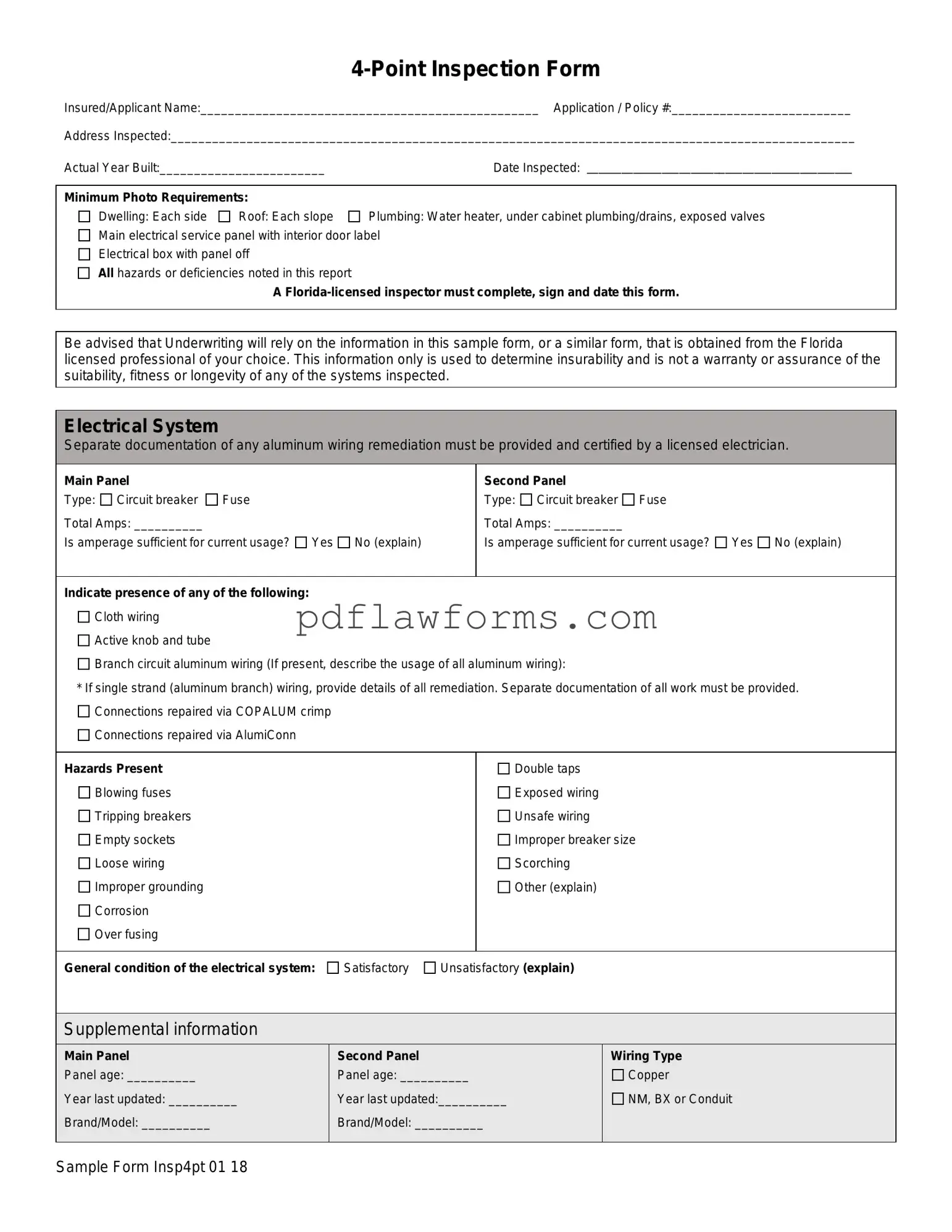The 4 Point Inspection form is an essential tool used primarily in Florida to evaluate the condition of key systems in a home. This form focuses on four main areas: the roof, electrical system, HVAC (heating, ventilation, and air conditioning), and plumbing. Each section requires detailed information about the condition and functionality of these systems. For instance, the roof section assesses the age and material of the roof, along with any visible damage or leaks. The electrical system section evaluates the main panel, wiring type, and any potential hazards. In the HVAC section, inspectors note the condition of heating and cooling systems, while the plumbing section checks for leaks and the condition of fixtures. Photographic evidence is also required to support the findings, ensuring that each aspect of the inspection is thoroughly documented. A licensed Florida inspector must complete and sign the form, as underwriting relies on this information to determine insurability. The insights gathered through this inspection not only aid in the insurance process but also help homeowners understand the current state of their property’s critical systems.
